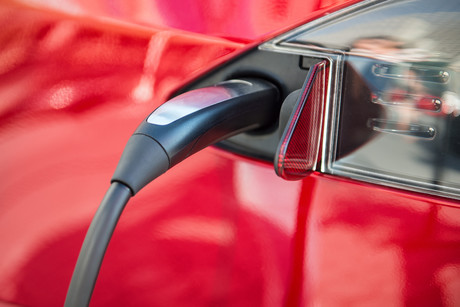Doubling the mileage of electric vehicles

Researchers from Georgia Institute of Technology (Georgia Tech) have developed a lithium-ion (Li-ion) battery with four times the capacity, more than double the lifetime and half the weight of currently used batteries. Commercialised versions of the battery could see the maximum mileage of an electric car increase to about 300 km with one charge.
Currently, graphite (cathode) and lithium metal oxide (anode) are used as electrode materials for commercial Li-ion batteries. The problem is that both materials have a relatively low energy storage capacity and are approaching theoretical capacity with current technology, meaning the electric vehicles in which they are used are mainly limited to short-distance driving.
To increase the distance travelled by electric vehicles, it is possible to install larger batteries. However, as the weight of the vehicle body increases, the fuel consumption of the automobile decreases; there is thus a limit to increasing mileage by adding the battery only. Therefore, new batteries must be developed using new electrode materials that have a larger storage capacity based on weight and volume.
Georgia Tech researchers led by Professor KwangSup Eom, who is jointly based at South Korea’s Gwangju Institute of Science Technology (GIST), looked at silicon cathode and sulfur anode as new electrode materials for Li-ion batteries. The problem with this was that when sulfur was dissolved in the anode, diffusion through the electrolyte would flow into the surface oxide layer of the anode as well as on the anode, resulting in a rapid drop in the ion and electrical conductivity of the silicon cathode.
To solve this, the team added selenium (Se) — whose ion and electric conductivity is thousands of times higher than that of sulfur — to the sulfur anode to form a lithium/silicon cathode–sulfur/selenium anode battery. As a result, before the sulfur was dissolved, the cellulose was preferentially dissolved and was preferentially included in the solid electrolyte interface (SEI) layer of the silicon electrode, and the performance was not reduced while it served as a protective film for the silicon cathode.
“Commercialisation of the developed battery can dramatically increase the mileage of an electric car by 150 km with a single charge,” said Professor KwangSup Eom, with the new battery having a storage capacity of about 500 mAh/g. “Additional types and amounts of additives are expected to increase capacity by 1.5 times and increase life span by more than two times.”
The researchers have also improved the stability of the battery, resulting in a performance reduction of only 19% during 1500 charge/discharge cycles. This means that even if used once a day for about four years, the battery performance is maintained over 80% and can be used without replacement.
In addition, if the developed battery were used in a mobile phone, the user would not notice a significant decrease in performance (less than 20%) for four years. When designing to the same capacity as a current phone battery, the battery weight decreases by about half.
The research has been published in the journal Nature Communications.
Soft robot uses magnetic fields to power itself autonomously
Inspired by the movement of manta rays, researchers have developed a small, magnetically powered...
Perovskite 'energy sandwich' could power next-gen solar
Researchers have achieved a new level of control over the atomic structure of halide perovskites,...
Creating the truck of tomorrow
Exploring the technological innovations, infrastructure solutions and emerging delivery methods...





